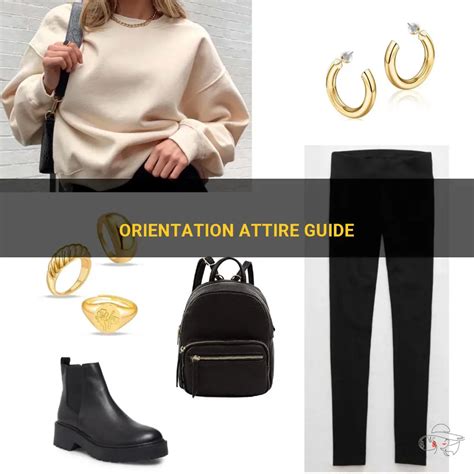Orientation is your chance to make a positive first impression on your new colleagues and supervisors. Your appearance can play a significant role in shaping their perceptions of you, so it’s important to dress appropriately. In this comprehensive guide, we’ll delve into the dress code for orientation, providing tips on what to wear, what to avoid, and how to accessorize to make a lasting impact.

Dress Code Etiquette
Professional Casual: Most organizations adopt a professional casual dress code for orientation, which falls between formal and casual wear. This dress code encompasses business-appropriate attire that is comfortable and allows for movement.
Business Formal: A small number of organizations may require business formal attire for orientation. This dress code requires formal suits, ties, and dress shoes for men and suits, skirts, or dresses with blouses for women.
Business Casual vs. Business Formal:
| Characteristic | Business Casual | Business Formal |
|---|---|---|
| Shirts | Button-down shirts, polo shirts | Dress shirts |
| Pants | Dress pants, khakis, skirts | Suits, dress pants |
| Shoes | Closed-toe shoes (e.g., loafers, flats) | Dress shoes (e.g., heels, oxfords) |
| Accessories | Minimal accessories (e.g., jewelry, watches) | Conservative accessories (e.g., cufflinks, ties) |
What to Wear: Tips for a Professional Appearance
For Women:
- Tops: Button-down shirts, blouses, or polo shirts in muted colors (e.g., navy, white, gray)
- Bottoms: Dress pants, khakis, or skirts that fall at or below the knee
- Dresses: Knee-length or longer dresses with modest necklines and sleeves
For Men:
- Shirts: Button-down dress shirts or polo shirts in neutral colors
- Pants: Dress pants or khakis in navy, gray, or black
- Ties: Optional, but can add a touch of professionalism
- Suits: A suit is recommended if the dress code is business formal
What to Avoid: Common Dress Code Mistakes
- Revealing Clothing: Avoid clothes that are too tight, sheer, or low-cut.
- Casual Clothing: Jeans, T-shirts, and athletic wear are generally not appropriate for orientation.
- Unkempt Appearance: Ensure your clothes are clean, pressed, and free of wrinkles.
- Excessive Jewelry: Avoid wearing excessive jewelry that could be distracting or get in the way.
- Strong Scents: Wear deodorant and limit the use of strong perfumes or colognes.
Accessorizing: Enhance Your Outfit
- Jewelry: Subtle jewelry, such as a watch, necklace, or earrings, can complement your outfit.
- Bag: Choose a bag that is both functional and professional, such as a briefcase or laptop bag.
- Shoes: Closed-toe shoes are recommended, and should be comfortable for walking and standing.
- Scarves: A scarf can add a touch of warmth and style to your outfit.
Why It Matters: The Benefits of Dressing Professionally
- Makes a Positive First Impression: Your appearance can influence the way people perceive your competence and professionalism.
- Shows Respect: Dressing appropriately demonstrates respect for your new workplace and colleagues.
- Inspires Confidence: Feeling confident in your outfit can boost your self-esteem and make you feel more comfortable in a new environment.
- Establishes Boundaries: Professional dress can help you establish boundaries between your personal and professional lives.
Case Study: The Impact of Dress Code
A study by the University of California, Berkeley found that job applicants who dressed professionally were perceived as more competent and trustworthy than those who dressed casually. Additionally, a survey by CareerBuilder revealed that 65% of hiring managers considered poor dress to be a reason for rejecting a job candidate.
Conclusion
Dressing appropriately for orientation is crucial for making a positive first impression and starting off your new job on the right foot. By following these guidelines, you can ensure your appearance reflects your professionalism, respect, and enthusiasm for your new role. Remember, your clothes can speak volumes before you even say a word, so investing in a professional outfit can pay off in the long run.
